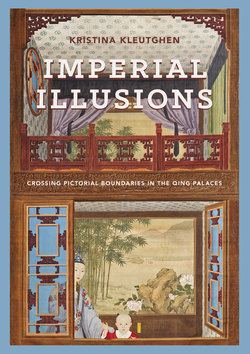Читать книгу Imperial Illusions - Kristina Kleutghen - Страница 48
На сайте Литреса книга снята с продажи.
Оглавление1.4Joao da Rocha, S.J.,
“The Annunciation.” Woodblock
print. From Rules for Reciting
the Rosary, 1619. The Getty
Research Institute, Los Angeles
(1374-445).
in a private home, as does the Annunciation, and therefore a screen painting would not have been out of place as meaningful ornament underlining the homeowner’s identity. Or perhaps it was an alternative to the dark, curtained wall shaded with cross-hatching in the original European image, which would have been difficult to replicate legibly in woodblock prints. Other illustrations in the Chinese text demonstrate a relative comfort with deep central spatial recession to a single vanishing point, so perhaps the inclusion of the landscape was thought to enhance the spatial depth perspective offered; or perhaps a different artist, with a less confident grasp of perspective, produced this particular illustration. Whatever the reason, the inclusion of linear perspective in the Aleni series provides the first incontrovertible occurrences of the technique in Chinese art. It would not be seen again until late in the Kangxi reign.
Beyond the foreign novelty of these images, the original Christian symbolism and evangelical intentions behind them were largely lost on their Chinese audiences, who
